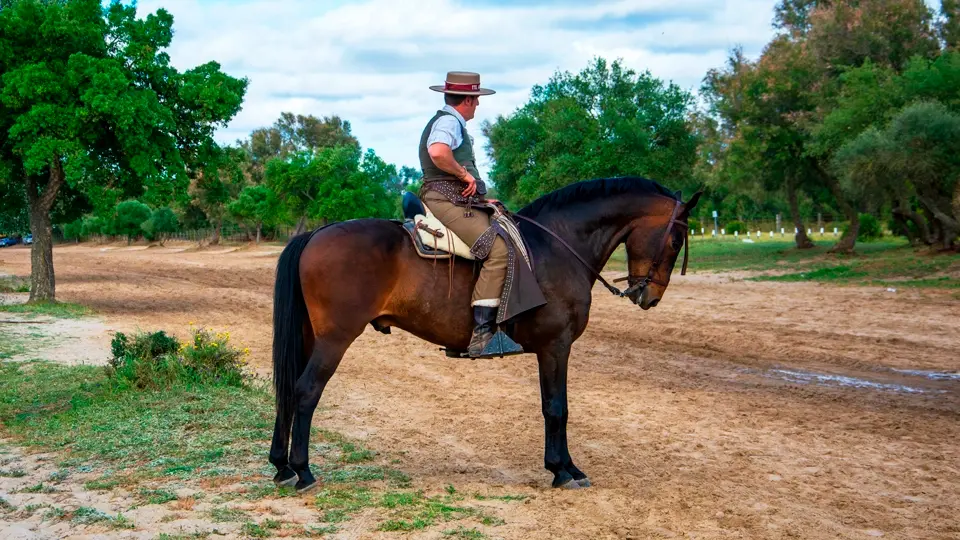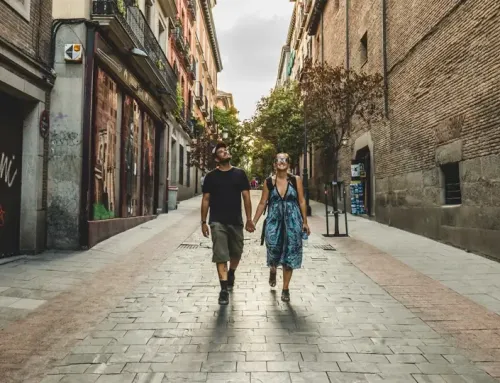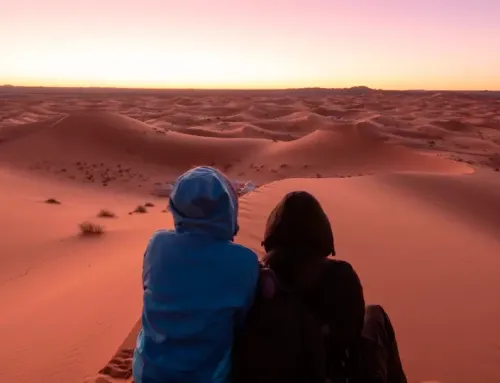The Pilgrimage of El Rocío: Faith, Tradition and Brotherhood
This small Huelva village in the heart of Andalusia is transformed for a few days into the setting of a tradition that will captivate all your senses.
El Rocío invites you to take part in an experience where more than a million people gather annually to celebrate a devotion that transcends borders and generations. It is an experience that connects you with the most authentic essence of Spain.
During Pentecost weekend, thousands of devotees from Spain and abroad gather in this Andalusian village, following a tradition dating back to the thirteenth century. It began when an image of the Virgin Mary appeared on an old tree trunk in the middle of the Doñana National Park.
Pilgrims travel to the sanctuary on foot, on horseback, or in beautifully decorated carts. Each step creates a unique atmosphere winding through one of Europe’s most precious natural spaces.
This quiet village embraces more than a million pilgrims during these days
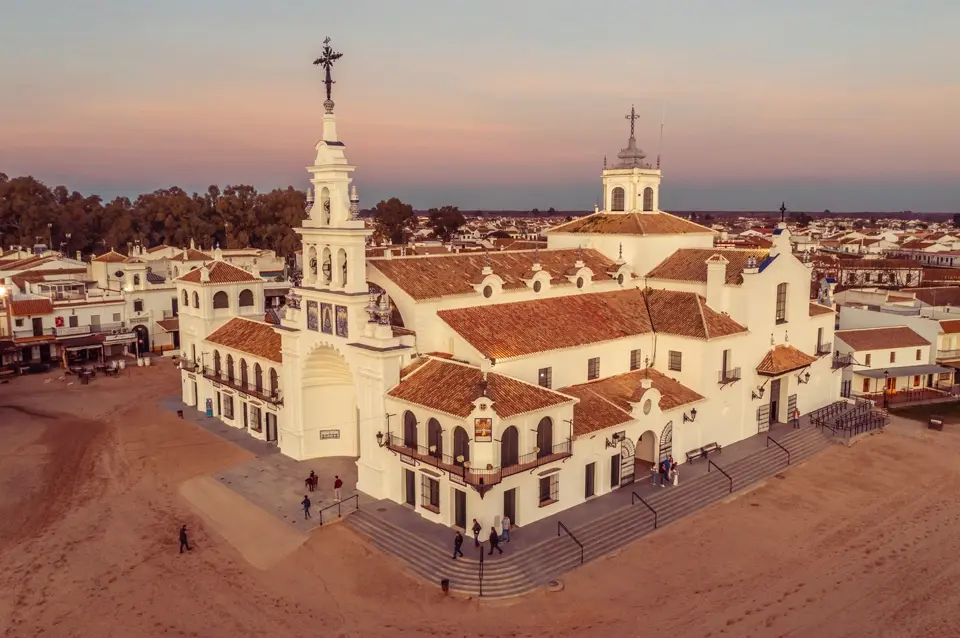
The magic of El Rocío lies in its 127 affiliated brotherhoods, each one with its own traditions, typical costumes and banners. Together, they bring their own color and devotion to the Virgin of El Rocío.
Here, you will find everything you need to know to immerse yourself in this unique experience. Whether you are a devout pilgrim or a curious traveler, you will find everything here, from the history and deep meaning of the pilgrimage to practical tips for preparing your journey and discovering what awaits you in the village.
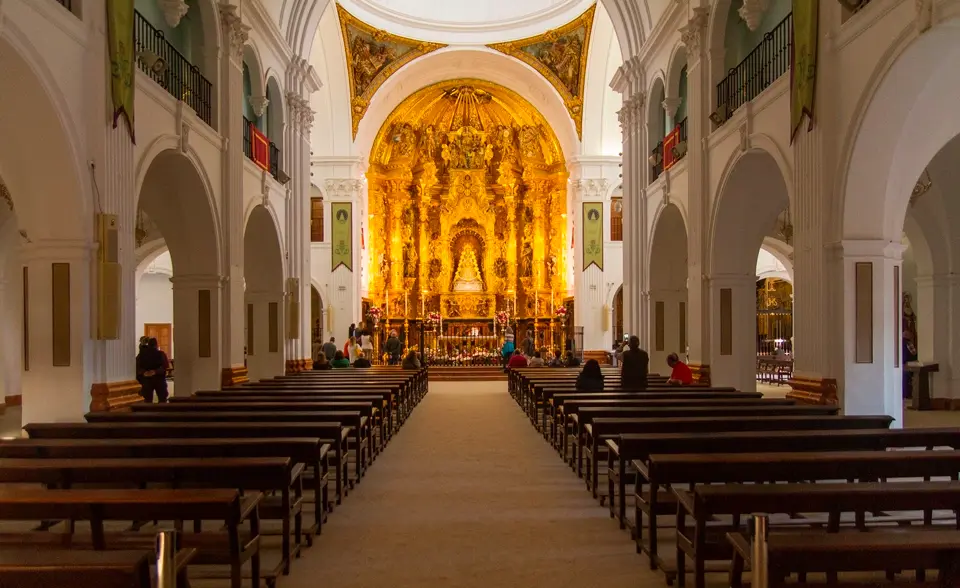
DISCOVER WHAT EL ROCÍO IS AND WHY IT IS SO SPECIAL
El Rocío transcends the concept of a mere destination. It is a village with its own soul that beats to the rhythm of centuries of devotion and tradition.
Located in the municipality of Almonte in Huelva, it sits in a privileged position between the town of Almonte and Matalascañas on the Atlantic coast. Its location at the gates of the Doñana National Park gives it extraordinary natural beauty, which is part of its unique charm.
During most of the year, the village has only 1,732 inhabitants. However, during the Pentecost pilgrimage, this number increases to approximately one million people. This temporary metamorphosis makes the municipality the third most populous in the country.
The village’s origins date back to the 13th century, after the Reconquista, when the first hermitage was built. The first written mention of the name “Rocío” is from April 25, 1653, in an Almonte City Council document referencing the celebration of “a novena of sung masses to Our Lady of El Rocío, protection and remedy of this town.” That same year, the town of Almonte officially proclaimed her as its patron saint.
Over time, it has received recognition: In 1992, it became the International Horse Village, and in 2006, it was designated a Bien de Interés Cultural, distinctions that underscore its exceptional heritage value. Its unique architecture and urban planning feature streets laid out in parallel and perpendicular lines, crossed by two large diagonals that connect directly to the Real and the chapel.
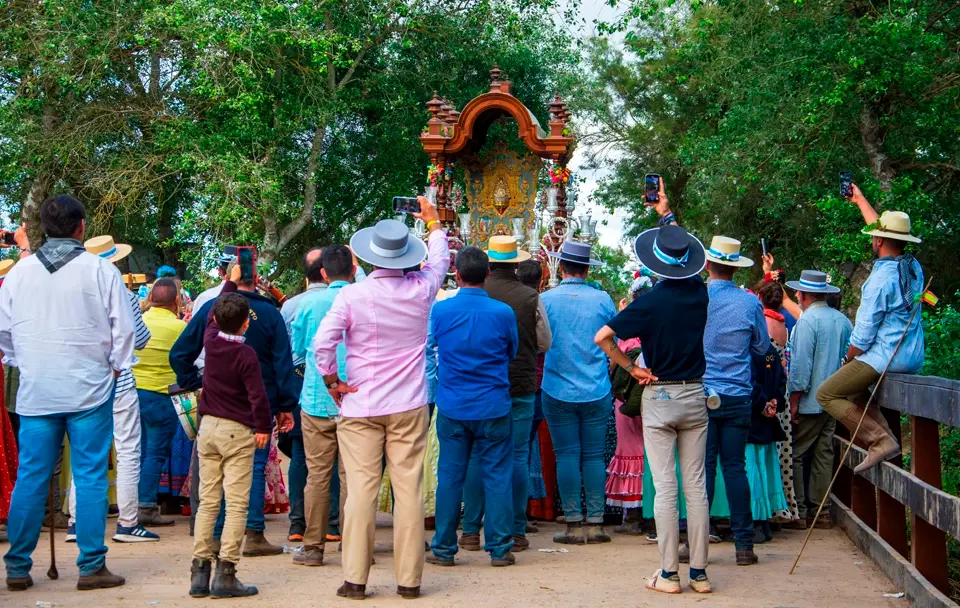
Every corner of El Rocío exudes tradition, devotion and the purest spirit of Andalusia

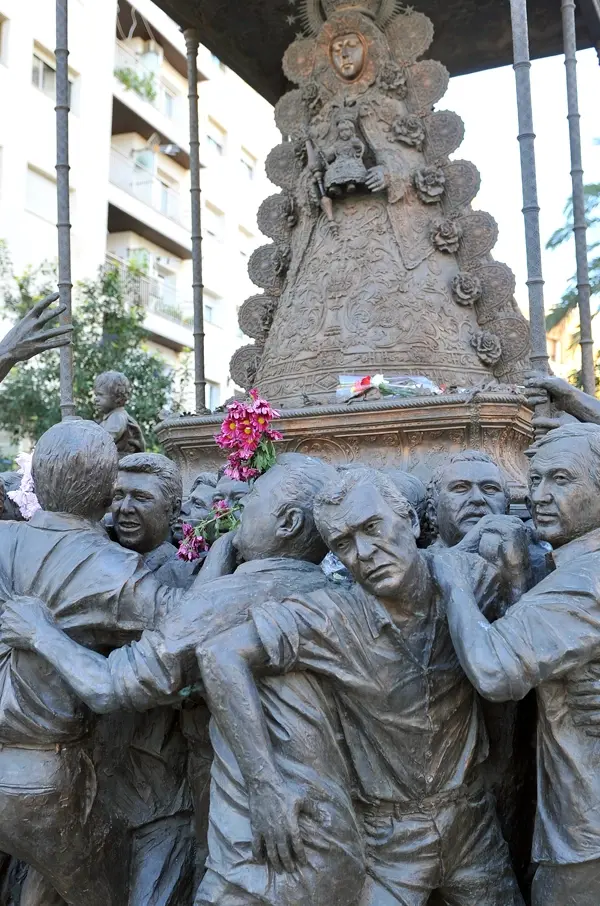
Today, in addition to its hermitage, El Rocío is home to 2,182 private residences, 79 brotherhood houses, hotels, a museum, an equestrian school, and various other services. All of these features come together to create a space where faith, nature, and tradition exist in perfect harmony.

PREPARATIONS FOR THE ROAD TO EL ROCÍO
Preparing for the Camino de El Rocío requires both physical and spiritual preparation.
The date of the Pilgrimage of El Rocío is determined by Pentecost Sunday, celebrated 50 days after Easter Sunday. Since Holy Week varies each year according to the lunar calendar, the date of El Rocío also changes.
The festivities culminate in the procession of the Virgin on Pentecost Monday at dawn.
The path is as sacred as the destination

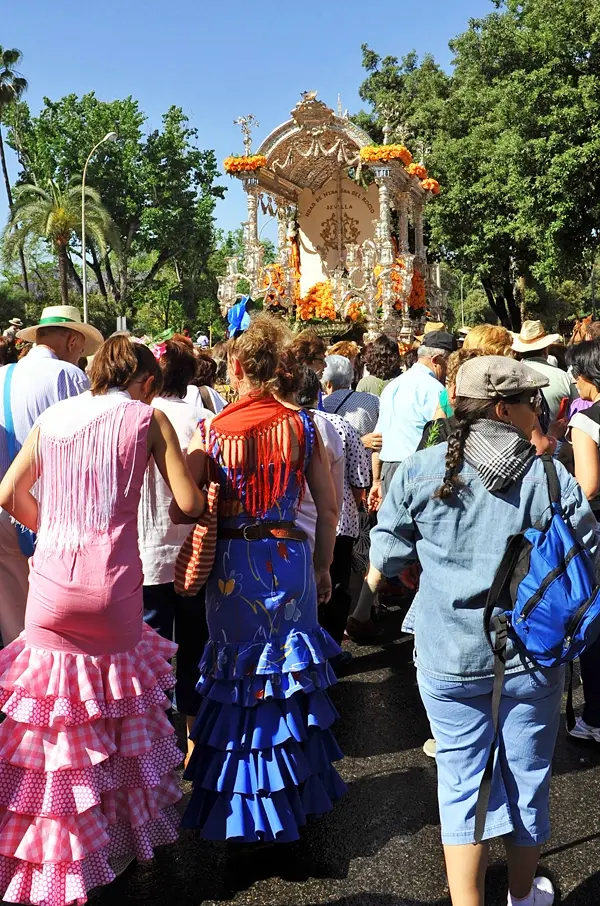
There are four main routes to the village of Almonte: the Ajolí, Moguer, Manecorro, and Los Llanos and Tarajales trails. Each route has its own history and traditions that will enrich your experience.
The pilgrimage takes between three and four days, covering up to 20 kilometers per day. For instance, the Hermandad Castrense de Sevilla dedicates four full days to its pilgrimage, while the Hermandad de Sevilla Sur completes it in two.
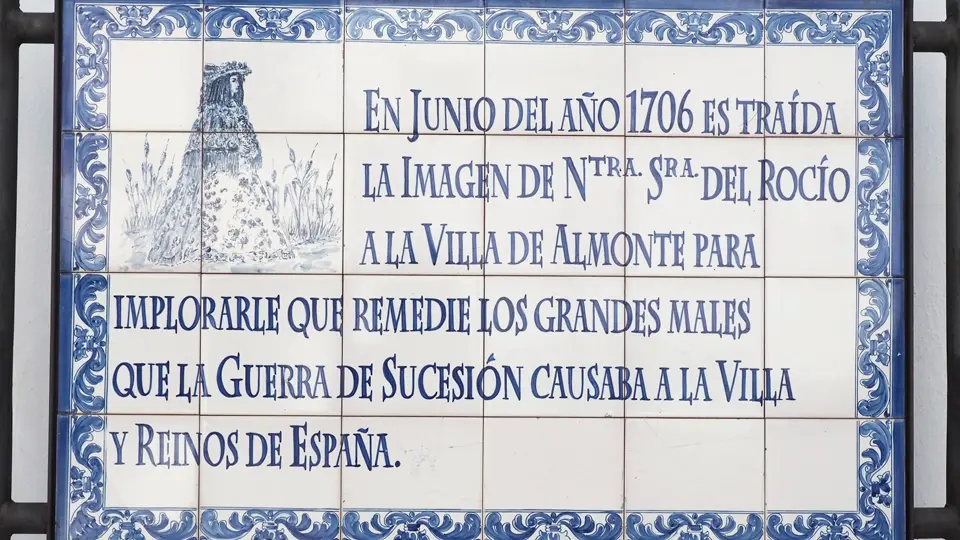
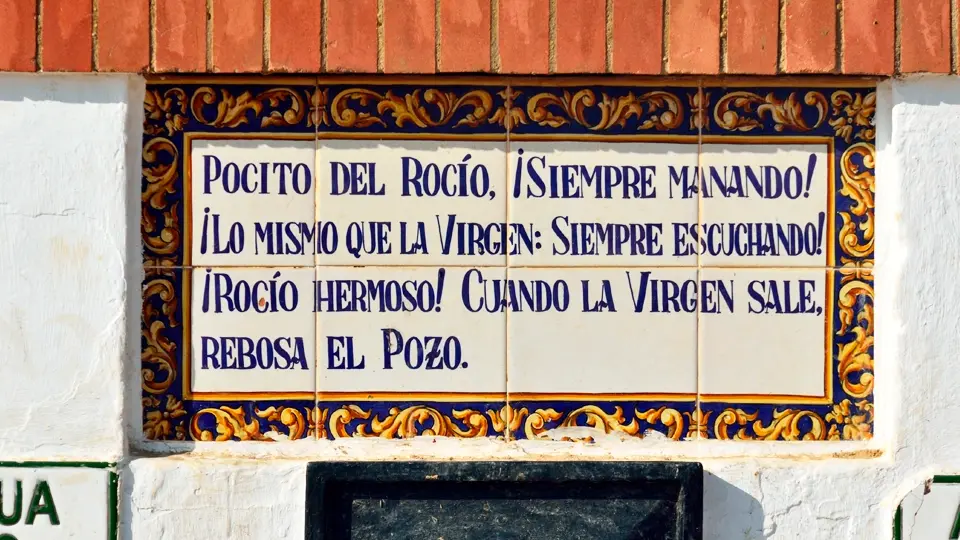
ESSENTIALS FOR YOUR ROCIERO LUGGAGE
Your hat or scarf is more than just an ornament; it will protect you from the relentless sun and the dust that accompanies you every step of the way.
The Vado del Quema awaits you with its baptism ritual.
This emblematic moment of the route, in which the waters of the Guadiamar bless the pilgrims, is one of the most emotional moments of the pilgrimage. The presentation before the Brotherhood of Villamanrique concludes these traditions that imbue the pilgrimage with deep meaning.
The Simpecado, whose name derives from “sinless conception,” accompanies you throughout the journey. This sacred banner is placed on a beautifully decorated cart and leads each procession, symbolizing the Virgin’s constant presence throughout the journey.
The Ajolí Bridge marks the end of your journey and the start of the village celebration. There, you will pay your respects to the Blanca Paloma in an emotional and faith-filled encounter.

WHAT IS THERE TO SEE AND EXPERIENCE IN THE VILLAGE OF EL ROCÍO?
The atmosphere changes completely on Pentecost Sunday as soon as you set foot in the village. The pilgrims, already settled in their homes, make way for the gathering of brothers and sisters. The evening celebrations gradually transform on the eve of the Blanca Paloma procession.
The pontifical mass marks the decisive moment of these days of jubilation. After the noon mass, the representatives of the 127 affiliated brotherhoods return with their simpecados to their respective houses of brotherhood.
The El Rocío hermitage stands on the edge of the Guadalquivir marshes, surrounded by the Doñana National Park. It is the spiritual heart of the village. You will be impressed by the interior’s size: a church with three naves, a basilica floor plan, and a transept where the Virgin receives the prayers of her devotees daily.
The most anticipated moment is the famous “jump over the fence.” It occurs between 2:30 and 3:30 a.m. on Sunday morning. The Almonteños jump the approximately 1.20-meter iron barrier that separates the pilgrims from the image, carrying it in procession through the village streets.
After walking so much, what should you eat? You can’t leave without trying potaje rociero, papas rocieras, or caldereta, all of which are best enjoyed with a loaf of bread. These comforting dishes are perfect for regaining strength after the journey’s exertion.
Discover this and other traditions with Carameltrail and experience the unique culture of Andalusia. Immerse yourself in the culture and experience Andalusia like a local.
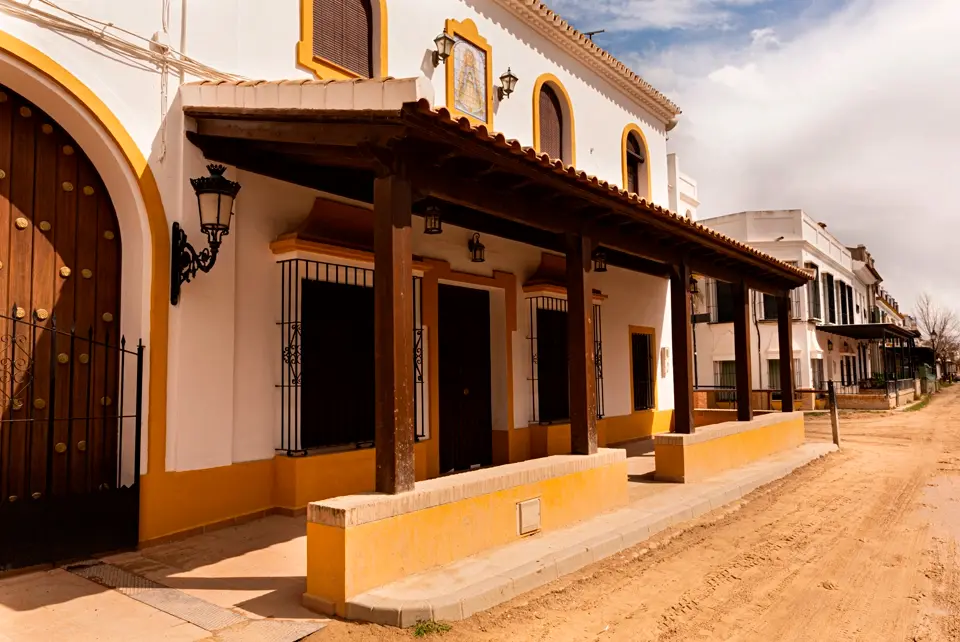
THE PILGRIMAGE OF EL ROCÍO: ONE OF SPAIN’S MOST EXTRAORDINARY CULTURAL TREASURES
The sands of Doñana silently witness a faith expressed through song, dance, and overflowing joy. There are also moments of recollection and deep devotion, especially during the pontifical mass and the emotional “jumping of the fence.”
Whether you are a devout pilgrim or a curious traveler, El Rocío will leave an indelible mark on you. The combination of breathtaking natural landscapes, centuries-old traditions, and the warmth of the local people creates an experience that transcends tourism.
Every step, every note of a sevillana rociera, and every grain of sand tells a story of faith and passion

If you want to experience the most authentic Spain, the Romería del Rocío should be at the top of your list. Although this guide has provided you with comprehensive information, no words can fully describe what it means to be there, to feel the dust of the road, and to hear the murmur of thousands of voices acclaiming the Blanca Paloma.
Long live the Blanca Paloma!
